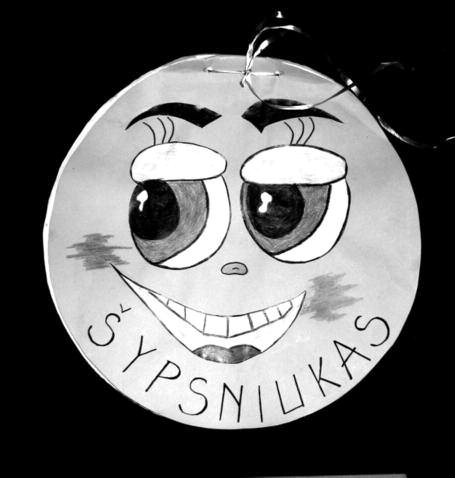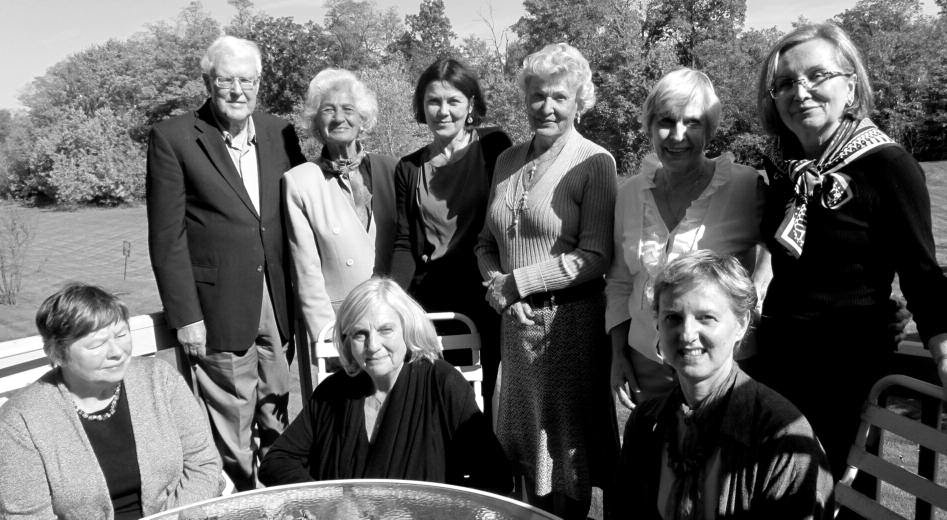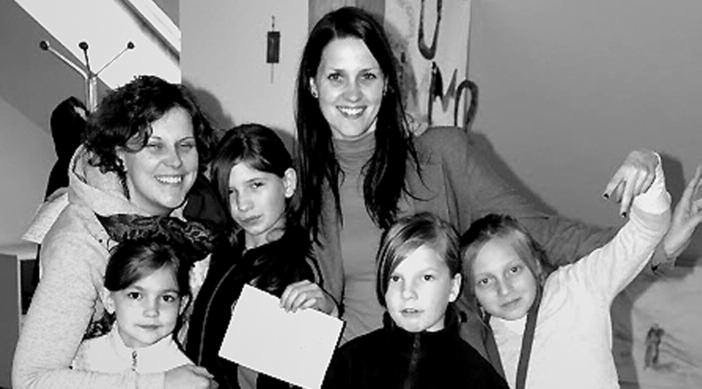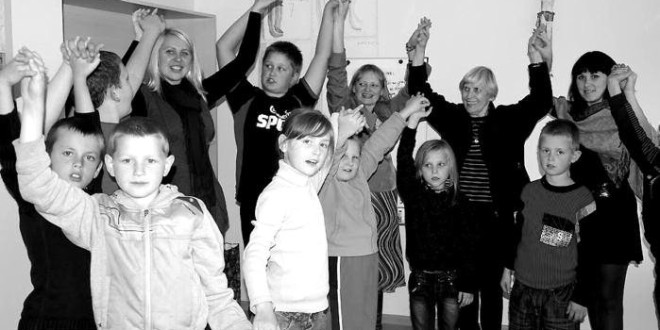By RAMUNĖ KUBILIUS.

In 1997, at the 10th World Lithuanian Symposium on Arts and Sciences in Chicago, social workers from Lithuania presented the sad and disturbing state of Lithuania’s street children. Their growing numbers, dismal living conditions and inadequate government programs dealing with the problem shocked symposium attendees. The children were not orphans per se, but they received so little support from their parents, that many of them were forced to beg in the streets. Others didn’t attend school in order to mind their younger siblings at home. Their parents, often single mothers, were unemployed and freqently struggled with alcoholism or drug addiction. It was evident that these children, who attended school sporadically, were undernourished, underdressed and rarely had extra money for needed school supplies.
In 1997, the Lithuanian government social care network was still in its nascent stages, so dedicated volunteers filled the void by setting up after-school programs to keep children constructively occupied and off the streets. They would sometimes offer the children a hot meal as well. Several Chicago Lithuanians, hearing of this, decided to help these budding volunteer centers, and Child’s Gate to Learning (Lithuanian – Vaiko vartai į mokslą), a not-for-profit, all-volunteer, group was formed.
Growth, Expansion and Support
Since 1998, Child’s Gate to Learning grew from a grassroots movement into a bona fide organization with elected officers, board of trustees, and bylaws. Its purpose is to directly support after-school programs and centers that are working with socially disadvantaged children and their families. The group started small, initially supporting a single center in Vilnius. Currently, the organization supports 11 after-school centers attended by over 350 children and youths from high-risk families. The centers are located in cities and towns across Lithuania: Vilnius, Kaunas, Jonava, Marijampolė, Rumbonys, Šateikiai, Užpaliai, Varėna, and Žemaičių Kalvarija. Each center is different as it conforms to local conditions and needs. One is located in a school, several are in Catholic parishes or CARITAS (the global Catholic relief organization) centers. Two centers are children’s homes, where children, abandoned by their parents, live year round.

Children at these centers receive help with their homework and, if need be, counseling. They learn responsibility by helping to keep their centers clean and tidy. They participate in character building activities, crafts, and outings. Birthdays and holidays are celebrated family-style at the centers, since it’s not always guaranteed that they will be acknowledged at their often chaotic homes.
Over the years, a special Child’s Gate to Learning committee prepared five character building programs that provided suggestions how to instill values, and build confidence and skills, based on thematic discussions, games, and activities.
Child’s Gate to Learning is based in the Chicago area, and has support groups in other US cities – Cleveland, Detroit, Philadelphia, Sunny Hills FL,and Washington, D.C. Dedicated volunteer coordinators recruit likeminded friends and supporters to organize fund raising events whose proceeds are donated to Child’s Gate to Learning. Officers have spoken about the organization’s activities at various conferences, camps, and to a Rotary Club. The organization keeps its administrative costs down to maximise the funding of its programs.

The after-school centers and youth homes receive some financial assistance from the Lithuanian government. However, it is sporadic and oftentimes late. For this reason, support from Child’s Gate to Learning is especially appreciated. The more than $60,000 annual support currently sent from the US to Lithuania by Child’s Gate to Learning is used by the centers to pay for meals, school supplies, hygiene items, craft items, special health needs, like eyeglasses, and sometimes even for heating bills or building repairs. The centers’ social workers visit families and, if needed, attend family court. They maintain contact with schools and teachers.The centers provide annual reports of how the organization’s funding was used.
How do you measure success?
Child’s Gate to Learning officers are often asked this question. Success is measured by children staying in school, completing high school and becoming productive adults. Centers report of their former wards being accepted in trade schools and universities. A few have heard the call to religious life and others are happily married. Success is measured by reports of children who have successfully avoided the pitfalls of poverty and addiction that ruined many of their parents’ lives. Success is also measured by the ever-increasing number of volunteers in Lithuania and from abroad, who commit to become role models, friends, big brothers and sisters, and homework helpers to their young charges.
Volunteers
Since 2000, more than 50 high schoolers, students, and adults fromthe US have gone to Lithuania to volunteer at the centers during summer. Volunteers assist in coordinating summer activities – crafts, games, sports, outings, and camps. Volunteers must be able to speak Lithuanian. Training sessions are required before leaving for Lithuania. Regardless of training, few volunteers know what to expect and are surprised how their own lives are transformed by the experience. One young volunteer, Gintarė Daulys, said that the experience inspired her to try to be a better person. Center directors have shared their satisfaction with the work of the youthful, enthusiastic, caring young volunteers and the children take pride in telling everyone that they now have friends from America…

Children Need Love
Tomas Čyvas, a former volunteer, now a college freshman, observed that center attendees shared hugs when they greeted each other in the morning and departed in the afternoon. It was as if they were close family members. The center’s director told him that the youths never know if they will be back at the center the next day. Sometimes, the behavior of their parents is deemed unsuitable or their home environment is appraised as unsafe, so the children are removed to a children’s home on short notice, and again their young lives are fought with uncertainty until the courts make a final decision about their fates. For them each day at the after-school center is a celebration of normalcy, routine and brotherly love. At the centers, caring social workers and adults ensure that they do their homework, help them launder their clothes, serve them meals, and work with them building character skills that they are not always learning at home.
Child’s Gate to Learning fundraising and volunteer programs have been supporting after-school centers in Lithuania for 15 years. Its founders once said: we want to help, we are able to help, and so we should help. Child’s Gate to Learning is resolved to continue helping and to work for the future of Lithuania and its children. More information about Child’s Gate to Learning is available www.childgate.org.
 DRAUGAS NEWS Lithuanian World Wide News in English
DRAUGAS NEWS Lithuanian World Wide News in English
